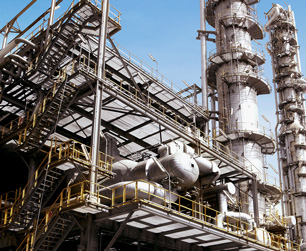Hexachlorobutadiene (HCBD)

Hexachlorobutadiene (HCBD) is a chemical that is produced primarily as a by-product during chemical manufacturing, where it is usually produced in amounts sufficient to cover its industrial uses: as a solvent in the manufacture of rubber and chlorine, as a lubricant, as a heat-transfer liquid and a hydraulic fluid, in gyroscopes and, though rarely, as a pesticide and fumigant.
Human exposure to HCBD can occur through contaminated water or foods, especially fish, that have bioaccumulated the chemical. According to the World Health Organization, the most likely route of drinking-water exposure is “from its use in the manufacture of chlorine.”
Health Effects of Hexachlorobutadiene
Animal studies have shown that both long and short-term exposure to HCBD can cause damage to the kidneys and liver, and tumor growth on the kidneys was observed in long-term studies. The WHO reports that workers exposed over the course of four years showed symptoms of low blood pressure, nervous system and liver disorders, and heart and respiratory damage. It's classified by the EPA as “possible human carcinogen.”
Water Treatment for Hexachlorobutadiene
According to the WHO, hexachlorobutadiene may be treated with granular activated carbon (GAC).
Sources: EPA, WHO, IARC, Wikipedia, Photo: WikiMedia, author: Secl
Site Index
Filtration Systems
- Aeration for Iron & Sulfide
- Backwashing Filters
(whole house & well units)
- Chlorine & Chemical Injectors
- Countertop Water Filters
- Garden Hose Filters
- Reverse Osmosis, Residential
- Reverse Osmosis, Commercial
- Shower Filters
- Specialty Filters
- Ultraviolet Systems
- Undersink Filters
- Water Softeners
- Whole House Filters
Cartridges
Parts
- Replacement Parts
- Faucets
- Filter Media
- Fittings
- Housings
- O-rings
- Pumps
- Pura UV
- R.O. Parts
- R.O. Tanks
- R.O. Booster Pump
- VIQUA UV